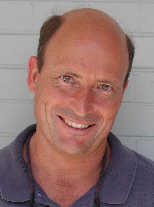
|
Math 2270-2280
Nick Korevaar's home page
|

|
These notes and links are on-line, at the URL http://www.math.utah.edu/~korevaar/coord2270-2280. Please contact me, Nick Korevaar, if you have any questions about teaching this class. My contact information is on my home page http://www.math.utah.edu/~korevaar.
Every instructor should be familiar with and follow the advice in the Departmental teaching guide.
Overview: Mathematics 2270-2280 is a year-long sequence devoted to linear mathematics. The first semester is a course about linear algebra and the second semester is an introduction to ordinary and partial differential equations. Most students taking this course are Math majors or minors and will take the entire sequence. Strong engineering and science students are also encouraged to take 2270-2280 as a more complete alternative to the engineering math courses 2250 and 3150 (partial differential equations). Alternately, some of these students from allied fields will decide to double major in or switch to Math, and take Math 2250 (linear algebra and differential equations), followed by 2270 and 3150.
Students in Math 2270 and 2280 are expected to learn the theoretical framework of the mathematics being discussed as well as the practical computational methods which result from the theory. In particular, students should be required to learn key definitions and proofs, especially in the linear algebra course. I always include a few theoretical questions on my exams, sort of warmups for what students will be confronted with in higher-level math courses. For example, can a student prove that the general solution to an inhomogeneous linear equation is given by the sum of a particular solution with the general solution to the homogeneous equation? Can they define a linear operator? Can they derive the general solution to a first order linear differential equation and explain what its form has to do with the previous linear algebra problems? Of course, I give students some indication of the definitions and theorems they are responsible for before I test them.
Technology: The Department strongly recommends using Maple or its equivalent in Math 2270 and Math 2280. Using technology has two merits: many students will be using math software in the future, be it Maple, Matlab, or Mathematica. Furthermore, software allows more interesting and realistic class examples and homework problems, and the texts are written with this in mind. If used appropriately, software will make the courses more interesting and enhance, rather than inhibit, theoretical understanding. It is expected that students in this sequence will become reasonably proficient at using Maple (or equivalent) software on the computer in order to complete large or complicated computations, and for visualization.
If you believe strongly in Matlab vs. Maple, you are free to teach your students via that particular package instead. It is not assumed that Math 2270 students have previous Maple/Matlab experience, and the first project should partly be an introduction to the software being used.
For the first couple of projects in Math 2270 I recommend meeting with your class in the computer lab LCB 115, as there is no assumption that your students have any previous experience with Maple or Matlab. Contact Angie Gardiner, before the semester starts if possible, to reserve the LCB 115 computer lab for the By the end of 2280 I simply post the projects and let the students work on them outside of class. I do often hold some of my office hours in the Rushing Student Center lab, when a project due date is approaching.
There are links to previous course home pages below, and I encourage you to use my or other previous instructors' old projects, modifying them as you please.
Grading: In each course there should be at least two in-class midterms as well as a comprehensive final exam. Exams should be graded primarily by the instructor. Homework should be assigned regularly. The assigned homework should be collected and (at least partially) graded, or there should be frequent short quizzes on course and homework material. It is important that students get frequent, timely feedback on their work. Contact Angie Gardiner (585-9478, gardiner@math.utah.edu) to request a grader for your section. Do this ASAP, preferably before the semester begins.
Prerequisites: For Math 2270, students need to have succeeded at first-year Calculus, Mathematics 1210-1220 ( or 1250-1260 or 1270-1280). Math 2270 is a prerequisite for Math 2280. The Math 2270, and especially the Math 2280 students, would also benfit from the multivariable calculus in either 1260, 1280, or 2210; for 2270 students it is nice to make the connection that affine transformations are the multivariable analog of tangent line approximations, and at the end of the course to discuss the implications of the spectral theorem for multivariable max-min theory based on the Hessian. Math 2280 students will need an understanding of curves and tangent vectors to understand the geometric meaning of solutions to systems of differential equations, and they should understand partial derivatives and the chain rule to understand the partial differential equations.
Detailed 2270, 2280 information: